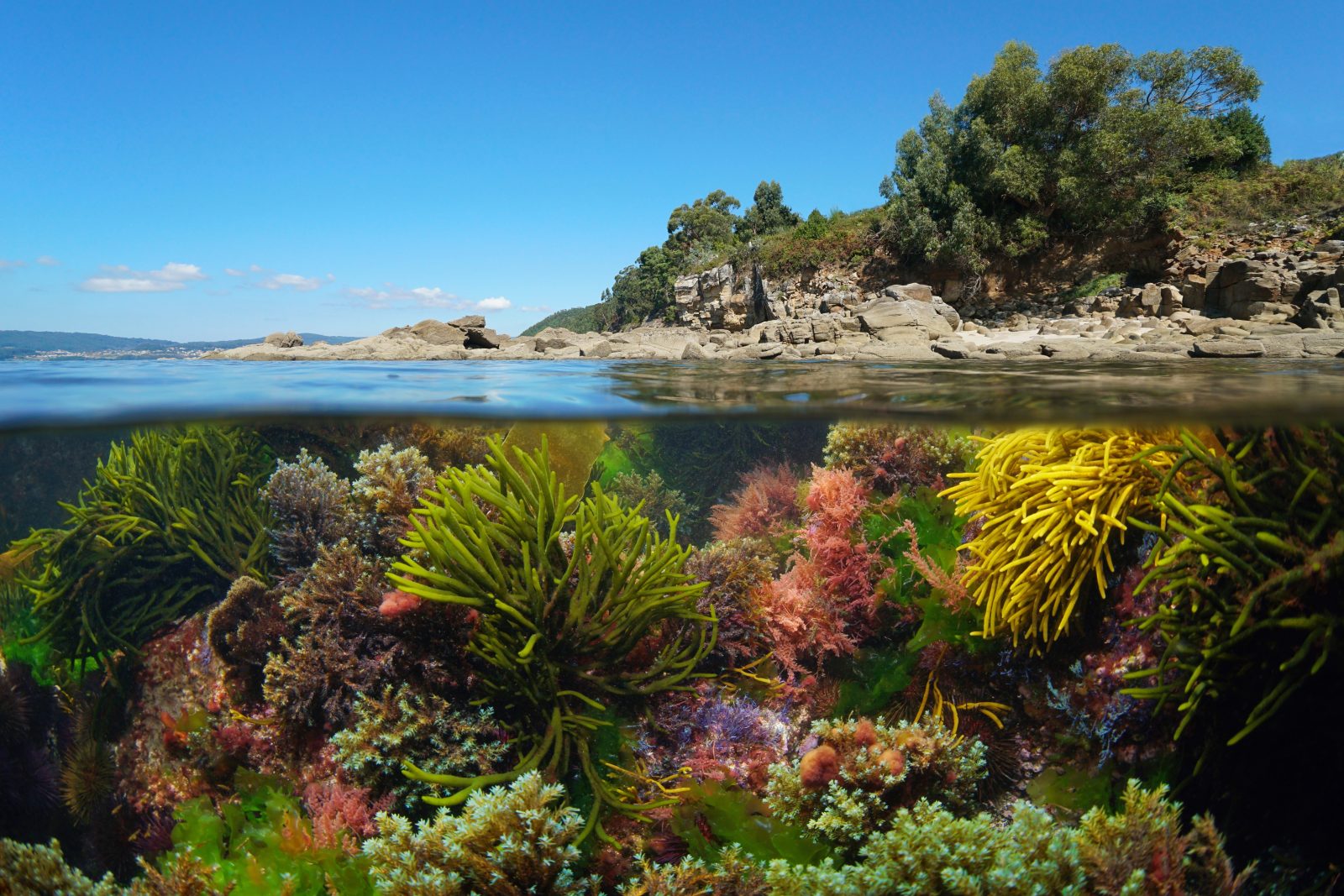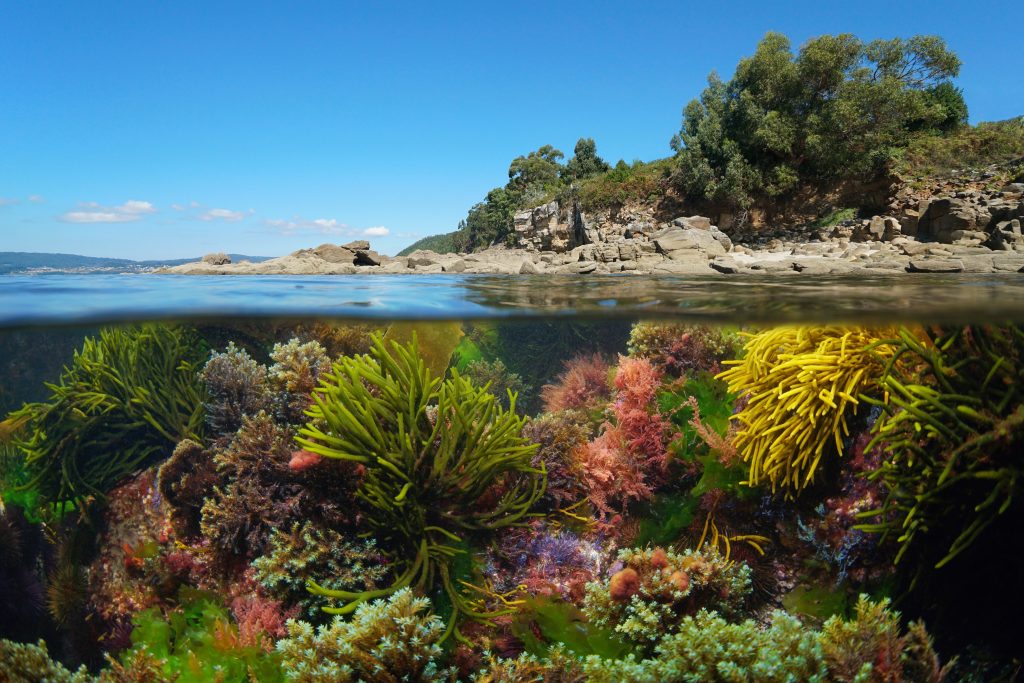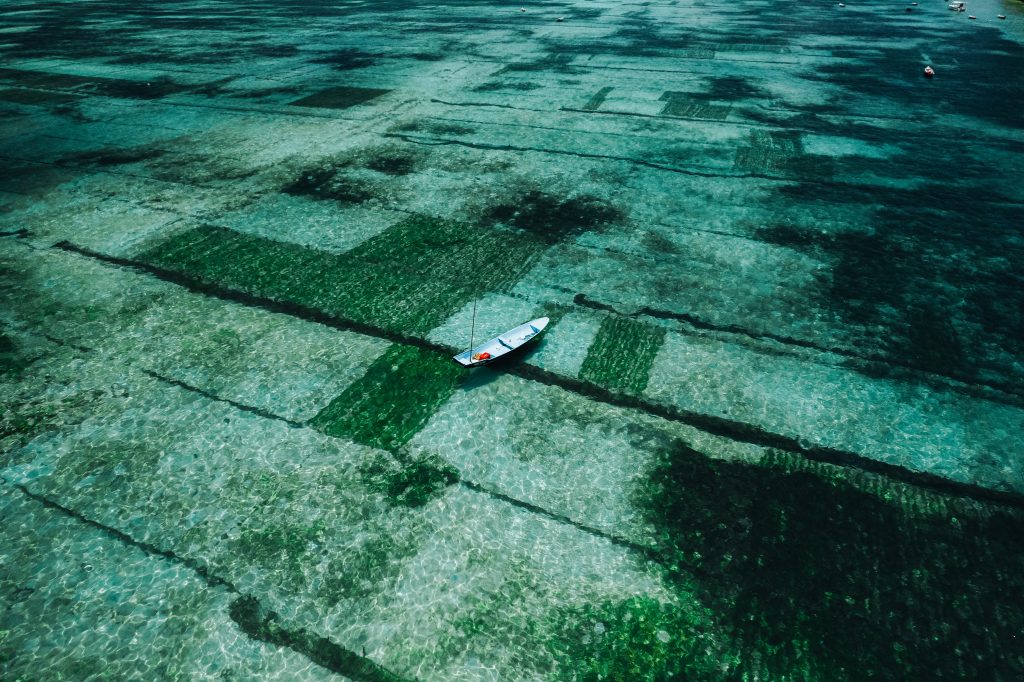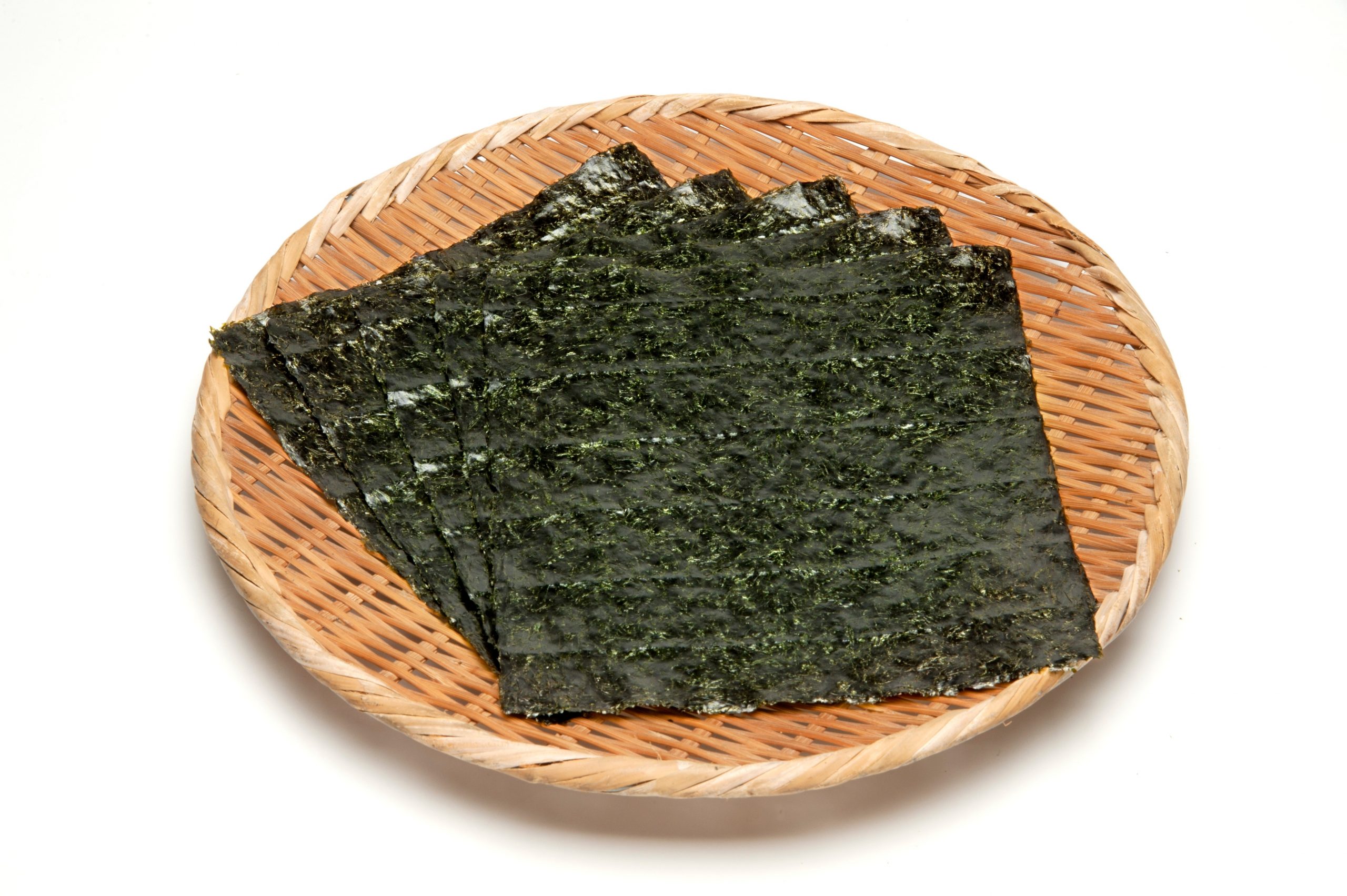Seaweed Secrets


In summer 2023, seaweed drew widespread concern and media attention as a giant “blob” of sargassum invaded Florida as well as parts of the Caribbean and the Gulf of Mexico. Despite the bad press, messy beaches and pungent odor, a look beneath the surface reveals a vast world of diverse complexity, beauty and practical potential.
By Eric Herman
Seaweed can be hard to appreciate. When piled on the beach, it may seem little more than a wreaking, slimy mass that is clearly not of the terrestrial world. In the water, brushing up against seaweed can impart a decidedly creepy sensation, while getting tangled in it can induce panic.
Upon closer inspection, however, seaweed’s odoriferous impression betrays layers of hidden interest, beauty and ecological importance.
ITS OWN THING
Seaweed, often referred to as marine macroalgae, is a group of remarkable organisms that play a pivotal role in the world’s oceans and coastal ecosystems. Seaweed also enjoys a long and varied history of human use — dating back millennia — as a food source, for its medicinal properties, and as a raw manufacturing material.
Taxonomically speaking, seaweed is not a type of plant, although it shares many characteristics with plants such as generating energy via photosynthesis. According to the National Oceanic and Atmospheric Administration, “Seaweeds are not true plants because they lack a vascular system (an internal transport system for fluids and nutrients), roots, stems, and enclosed reproductive structures like flowers. Because seaweeds are in constant contact with the water, they are able to absorb all that they need directly.”
Along with cyanobacteria and other forms of algae, seaweed was an early photosynthetic organism that spread rapidly in the primordial oceans, eventually oxygenating the earth’s oceans and atmosphere.
While seaweed played a major role in establishing life’s foothold on the planet, today it remains essential, as a potentially sustainable source of nutrients and energy.
Seaweed is both hightly adaptable and as a result, incredibly diverse, inhabiting marine environments around the globe.
It is classified into three primary groups: green, brown, and red. Each exhibits unique characteristics, including pigments, cell structure, and preferred habitats.
- Green: Also known as Chlorophyta, green seaweed is the most diverse group, containing over 7,000 species. These seaweeds are known for their bright green coloration, a result of their chlorophyll pigments. They inhabit a variety of marine environments, from rocky shores to deeper waters, and some even thrive in freshwater habitats. Sea lettuce is a familiar example of green seaweed.
- Brown: The brown algae, or Phaeophyta, are characterized by their brown to olive-green color, which results from the dominant pigment fucoxanthin. Brown seaweeds are predominantly found in cold, temperate waters and are well-known for their large, complex structures. Some well-known brown seaweeds include kelp, bladderwrack, and the ever-abundant sargassum.
- Red: Red algae, or Rhodophyta, comprise approximately 6,000 species. They get their name from the red pigments called phycoerythrins and phycocyanins that drive their coloration. Red seaweeds are often found in warmer waters and are a common sight in tropical coral reefs. Notable examples of red seaweed include dulse, nori, and coralline algae.
Seaweeds of all colors are vital components of marine ecosystems, playing a multitude of roles that contribute to the health and balance of coastal and open-ocean environments. Their ecological importance is far-reaching and extends from primary production to providing habitat and food for numerous species.
ECOLOGY SUPERSTAR
It’s difficult, if not impossible to quantify seaweeds’ ecological importance:
It absorbs copious amounts of CO2 and many types of organic compounds, and is absolutely essential to the existence of numerous aquatic animals and microorganisms. Seaweed masses become thriving habitats that support their own diverse ecosystems.
Most of the world’s oxygen (between 70% and 90%) comes from seaweeds and other microscopic algae. Seaweeds support primary production levels that are six-to-10 times greater that the most intensive land-based agricultural systems. It is estimated that there are nine times more microscopic algae and seaweeds in the oceans than there are plants on land.
Seaweeds are amongst the fastest growing organisms on the planet. For example, under optimal conditions, the giant kelp Macrocystis pyrifera, can grow nearly a meter a day, reaching lengths in excess of 50 meters.
Seaweeds are “primary producers,” just like land-based plants. They photosynthesize, converting sunlight and carbon dioxide into organic matter and oxygen. This primary production forms the foundation of marine food webs, providing sustenance for a myriad of marine creatures, from tiny zooplankton to large fish and mammals.
Seaweeds provide crucial habitats and shelters for many marine organisms. The intricate structures of brown kelp forests, for example, offer refuge for various species of fish, invertebrates, and mollusks. Red algae often serve as substrate for corals and house many diverse invertebrates in tropical regions.
The presence of seaweed enhances marine biodiversity by promoting the existence of various species that are uniquely adapted to their habitats. This biodiversity benefits both the marine environment and humans who depend on these ecosystems for food and recreation.
Seaweed also plays a role in stabilizing coastal landforms and mitigating erosion. The strong holdfasts of kelp forests, as an example, help anchor sediments in place, reducing the impact of waves and tides on shorelines.
On a chemical level, seaweed plays a vital role in nutrient cycling. They absorb excess nutrients from the water, which can help combat problems such as eutrophication, a common issue in many coastal areas due to agricultural runoff and pollution. In that context, seaweed is crucial in reducing “dead zones” that exist at the mouths of many major rivers.
PRACTICALLY APPLIED
Beyond the ecological importance, seaweed has numerous practical applications that have been recognized and utilized by humans for centuries. These purposes range from culinary and pharmaceutical to agricultural and industrial.
- Kitchen fare: Seaweed is a staple in the diets of many cultures, particularly in east Asia, where varieties such as nori, kombu, and wakame are used to make sushi, soups, and salads. Seaweed is not only nutritious, but it also adds a unique “umami” flavor to dishes. They are a rich source of vitamins, minerals, and dietary fiber, and contain essential nutrients such as iodine, iron, and omega-3 fatty acids, making them a valuable addition to a balanced diet.
- Apothecary: Seaweed has been used in traditional medicine for its various health benefits. It is also a source of bioactive compounds with potential medicinal properties, including antiviral, antibacterial, and anti-inflammatory effects.
- Farm subsidy: Seaweed can be used in agriculture as a natural fertilizer and soil conditioner. It can enhance soil structure, promote plant growth, and increase crop yields. Some seaweed extracts also help plants resist diseases and pests.
- Factory friendly: Seaweed is used in the production of various industrial products. Agar, a substance derived from red algae, for example, is used in the production of gelling agents in the food industry. Alginate, another compound from brown algae, is used in the textile, cosmetic, and pharmaceutical industries.
CLEANING UP
Many believe that seaweed has the potential to help clean up polluted waters. Some species have the capacity to absorb heavy metals and pollutants, which makes them useful in bioremediation efforts. Like all other plants, seaweed absorbs CO2.
For these reasons and more, the importance of seaweed in our world’s oceans and coastal ecosystems should not be underestimated. Recognizing the ecological significance and the diverse potential applications of seaweed underscores the importance of its conservation and sustainable management.
Those measures begin with understanding and education. As science and society continues to explore and embrace the remarkable world of seaweed, it becomes increasingly clear that these marine organisms are not only fascinating, but also indispensable to the health of our planet and the well-being of our human world.
References: “Seaweed: A User’s Guide” by Ole G. Mouritsen, “Seaweeds: Edible, Available, and Sustainable” by Ole G. Mouritsen and Mariela Johansen, “Journal of Applied Phycology” – A scientific journal dedicated to the research and application of seaweed.
Opening photo by Damsea | Shutterstock, second photo by Peter116 | Shutterstock, third photo by Suitlana Hulko | Shutterstock, bottom photo by Ground Picture | Shutterstock.












